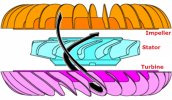rich.g.williams
Senior Member
- Joined
- Oct 25, 2009
- Messages
- 753
- Reaction score
- 180
- Location
- Cardiff, South Wales
- Your Mercedes
- C200 Kompressor Coupe 2003
- Thread Starter
- Thread starter
- #81
Rubber rectangular cross section O ring seals two per piston, one outside one inside. They sit in grooves.The rings you speak of are flat composite piston rings? Do they lock together or?



